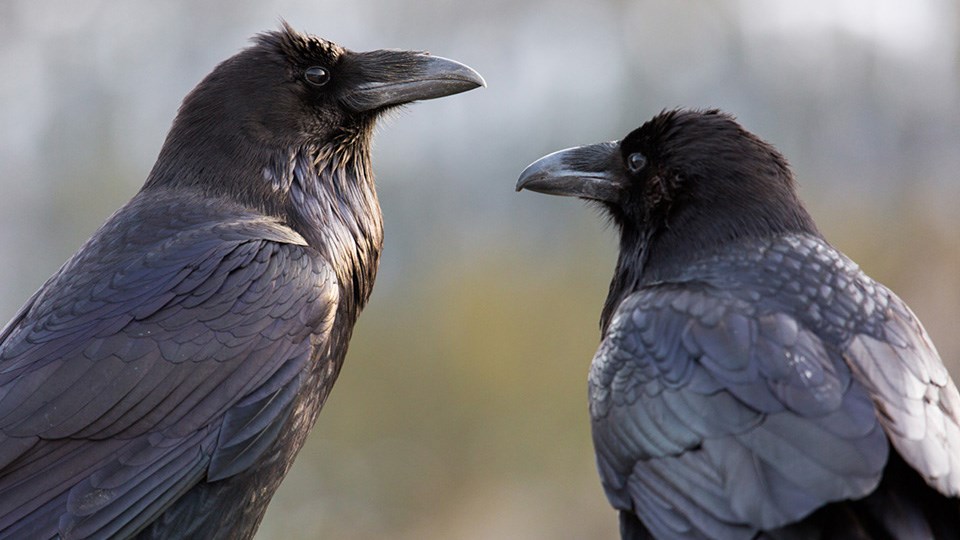
NPS/Neal Herbert Several raven relatives live in Yellowstone, including the common raven (Corvus corax). Common ravens are smart birds, able to put together cause and effect. Ravens are attracted to wolf kills and may follow wolves while they hunt elk. Wolves also provide better access to carrion, as ravens are not able to rip open thick skin on their own. Ravens are willing to eat almost anything and are frequently seen near parking lots searching for food—some have even learned to unzip and unsnap packs. Do not feed them. Recent surveys indicate 200–300 ravens are present in the northern range of Yellowstone and 53% of those are in wolf habitat, away from human areas. Before wolf reintroduction, nearly 74% of ravens likely used human areas. Researchers are further investigating seasonal and spatial patterns in raven habitat use, and their relationships with humans and wolves, by monitoring raven movements using satellite transmitters. ResourceCornell University, and American Ornithologists’ Union. 2004. Birds of North America Online. Ithaca, NY: Cornell Lab of Ornithology. https://birdsna.org/. Walker, L.E., et al. 2018. Population responses of common ravens to reintroduced gray wolves. Ecology and Evolution 2018;00:1-11. 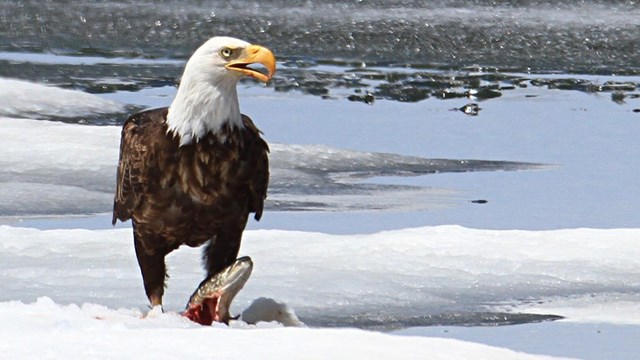
Bald Eagle
Bald eagles can be seen along Yellowstone's many rivers and lakes. 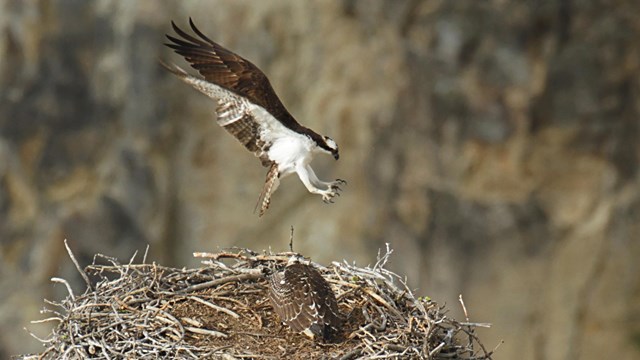
Osprey
Osprey summer in Yellowstone, fishing and raising young. 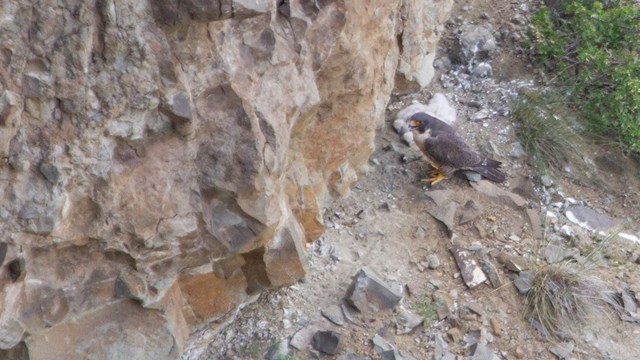
Peregrine Falcon
Peregrine falcons are some of the fastest birds. 
Colony Nesting Birds
American white pelicans and other colonial nesting birds nest primarily on the Molly Islands in the southeast arm of Yellowstone Lake. 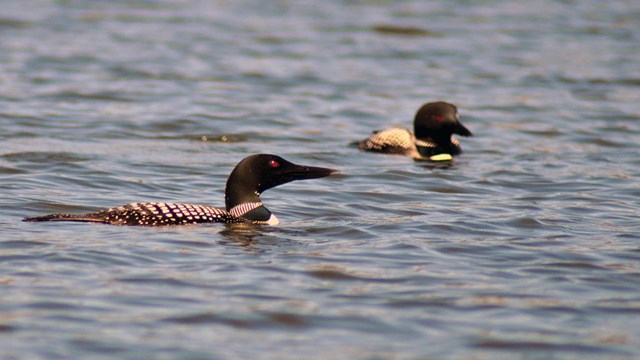
Common Loon
Loons in Yellowstone are some of the southern most breeding populations. 
Trumpeter Swan
Trumpeter swans are the largest wild waterfowl in North America. 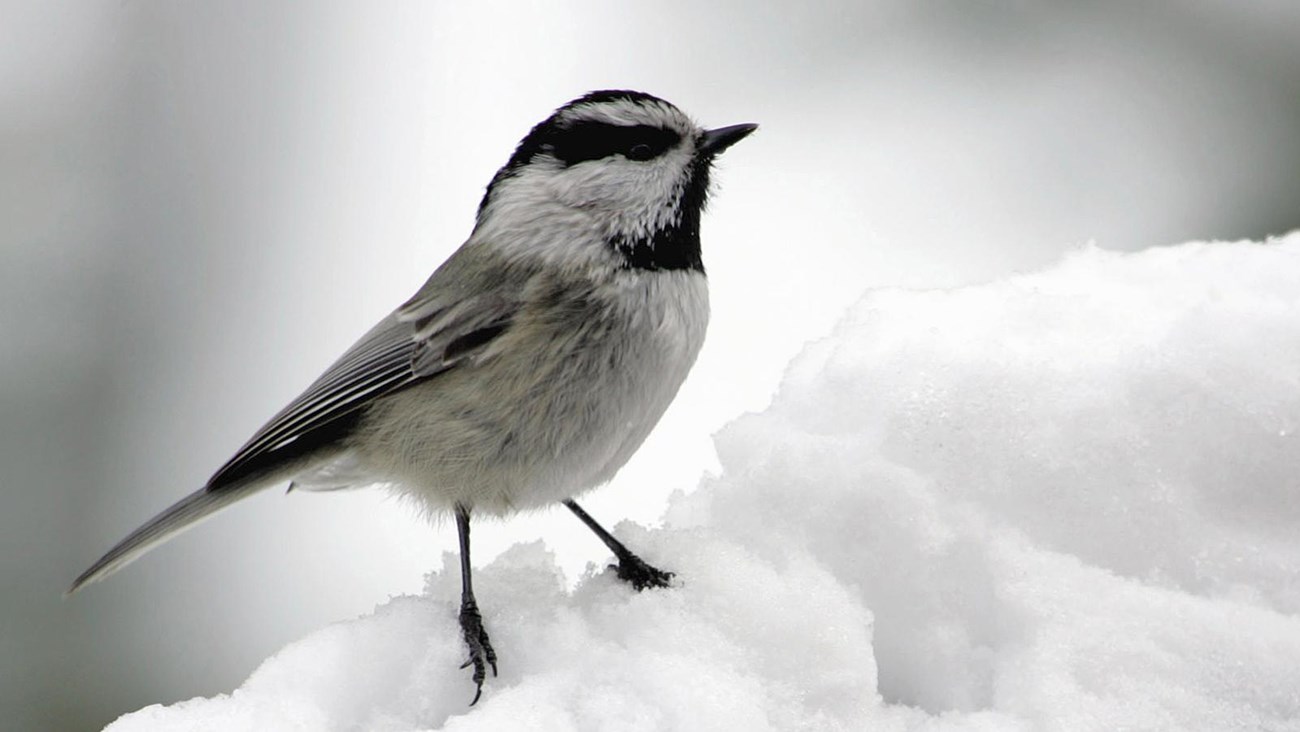
Songbirds and Woodpeckers
Passerine and near passerine species comprise the majority of bird species in Yellowstone. 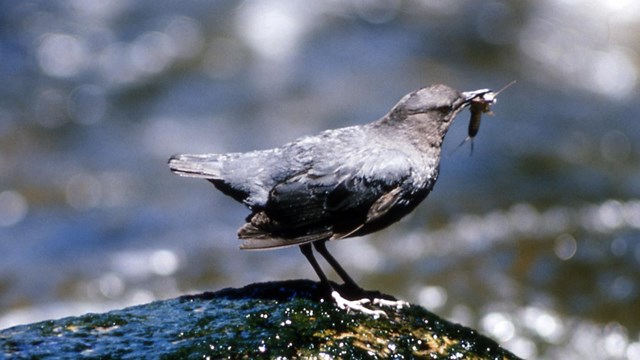
American Dipper
Also known as the water ouzel, these birds dive into water for aquatic insects. 
Sandhill Crane
Sandhill cranes nest in Yellowstone during the summer. 
Sound Library
Immerse yourself in the aural splendor of Yellowstone. 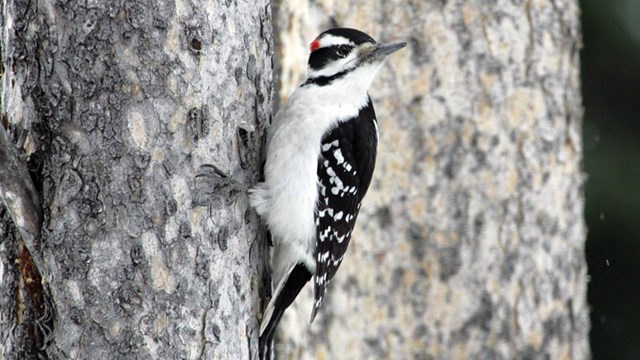
Birds
Spring is a wonderful time to look for birds, as migration brings many birds back to the park. |
Last updated: April 17, 2025
